In today's fast-paced digital landscape, understanding how your marketing channels contribute to conversions is more crucial than ever. Whether you're running ads on social media, utilizing email campaigns, or optimizing your SEO, knowing which channels drive results can make or break your marketing strategy. Many marketers struggle with this aspect because they rely on outdated methods or lack the right tools to gain clear insights. This is where channel marketing attribution comes into play.
Channel marketing attribution is the process of assigning credit to various marketing channels that lead to conversions. It helps businesses optimize their marketing strategies, allocate budgets effectively, and ultimately drive better results. However, with the growing complexity of customer journeys—often involving multiple touchpoints across various channels—attribution can be quite challenging.
By leveraging the right marketing attribution tools, you can gain valuable insights into your marketing performance, make data-driven decisions, and maximize your return on investment (ROI). In this article, we will explore the top tools for channel marketing attribution that can help you unlock your marketing potential and refine your strategies.
Best for: Comprehensive marketing attribution across all channels.
Cometly is a marketing attribution and analytics platform that tracks the entire customer journey in real time, showing exactly which ads and channels drive leads and revenue.

Overview & Background: Cometly connects your ad platforms, CRM, and website, providing a complete view of customer interactions. This allows marketers to analyze ad performance, compare attribution models, and make informed decisions to scale their campaigns effectively.
Key Features:
1. Capture Every Touchpoint: Cometly tracks every interaction from ad clicks to CRM events, providing a complete view of customer journeys.
2. Know What’s Really Driving Revenue: Beyond surface-level metrics, Cometly connects touchpoints to conversions, allowing marketers to see which sources truly convert.
3. Get Recommendations From AI: The platform's AI identifies high-performing ads and campaigns across all channels, empowering marketers to scale with confidence.
4. Feed Ad Platform AI Better Data: Cometly sends enriched, conversion-ready events back to ad platforms like Meta and Google, improving targeting and optimization.
How It Works: Setting up Cometly involves integrating your existing ad platforms and CRM systems. Once connected, the platform begins tracking customer interactions and provides real-time insights into your marketing performance.
Pricing & Plans: Cometly offers various pricing plans tailored to the needs of different businesses, making it accessible for both small businesses and large enterprises.
Why It's Great for Marketers: Cometly stands out for its combination of advanced analytics, ease of use, and ability to deliver actionable insights, helping marketers refine their strategies and maximize ROI.
Best for: Comprehensive marketing management including attribution.
HubSpot is an inbound marketing, sales, and service software that provides tools for content management, social media marketing, and analytics.

Overview & Background: HubSpot's Marketing Hub includes attribution reporting tools that allow marketers to see how different channels contribute to their overall success. It integrates seamlessly with other HubSpot tools, creating a unified platform for managing marketing campaigns.
Key Features:
1. Multi-Touch Attribution: HubSpot's attribution reports enable marketers to see how multiple channels work together to drive conversions.
2. Campaign Performance Tracking: Users can track the performance of individual campaigns and see which channels yield the best results.
3. Integration with CRM: HubSpot's built-in CRM makes it easy to track customer interactions and conversions, providing a holistic view of marketing effectiveness.
4. Custom Reporting: Marketers can create custom reports tailored to their specific needs, offering detailed insights into channel performance.
How It Works: After setting up an account, users can integrate their existing tools and start creating campaigns. HubSpot automatically tracks interactions across channels, providing insights through its reporting dashboard.
Pricing & Plans: HubSpot offers a free tier with limited features, and pricing scales based on the number of users and additional features required.
Why It's Great for Marketers: HubSpot’s all-in-one platform is ideal for teams looking to manage all aspects of their marketing efforts in one place, with robust attribution capabilities to inform decisions.
Best for: Tracking website and app performance with attribution insights.
Google Analytics 4 offers advanced tracking and reporting capabilities for both websites and mobile apps.
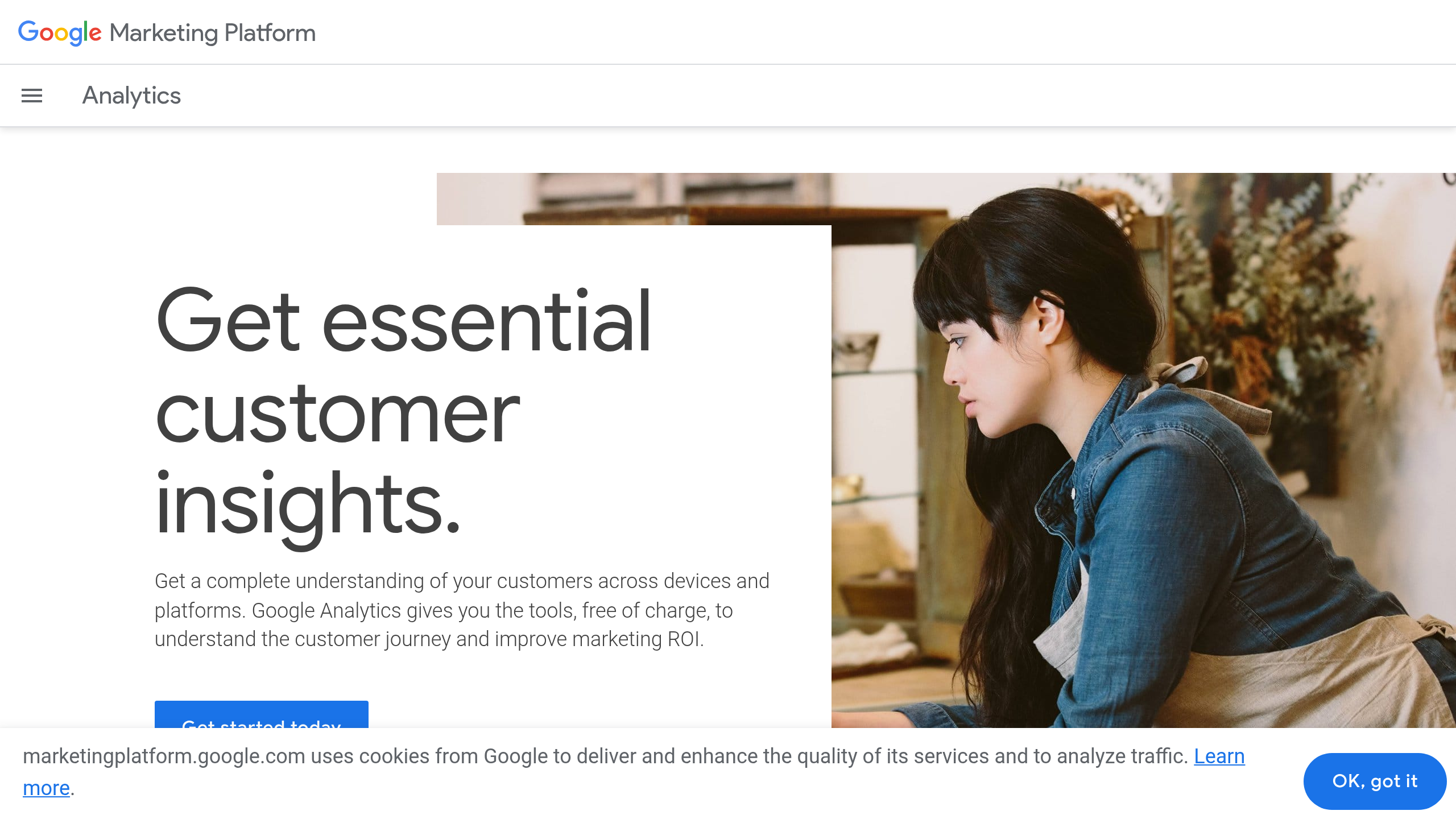
Overview & Background: GA4 combines data from both web and app interactions, allowing marketers to track user journeys across platforms. It uses machine learning to provide predictive insights and attribution modeling.
Key Features:
1. Event-Based Tracking: GA4 focuses on events rather than sessions, providing a more comprehensive view of user interactions.
2. Cross-Platform Tracking: Marketers can analyze user behavior across both websites and mobile applications, offering a complete picture of the customer journey.
3. Attribution Models: GA4 includes several attribution models, allowing users to see how different channels contribute to conversions.
4. Integrated Reporting: The platform provides detailed reports that can help identify trends and areas for improvement.
How It Works: After setting up GA4, users can configure tracking for various events on their website or app. The platform then collects data and provides insights through its reporting interface.
Pricing & Plans: Google Analytics 4 is free for most users, with additional features available through the paid Google Analytics 360 suite.
Why It's Great for Marketers: GA4’s ability to track user behavior across platforms and provide predictive insights makes it a powerful tool for marketers looking to understand their audience better.
Best for: Enterprise-level analytics and attribution tracking.
Adobe Analytics provides deep insights into customer experiences across all channels.
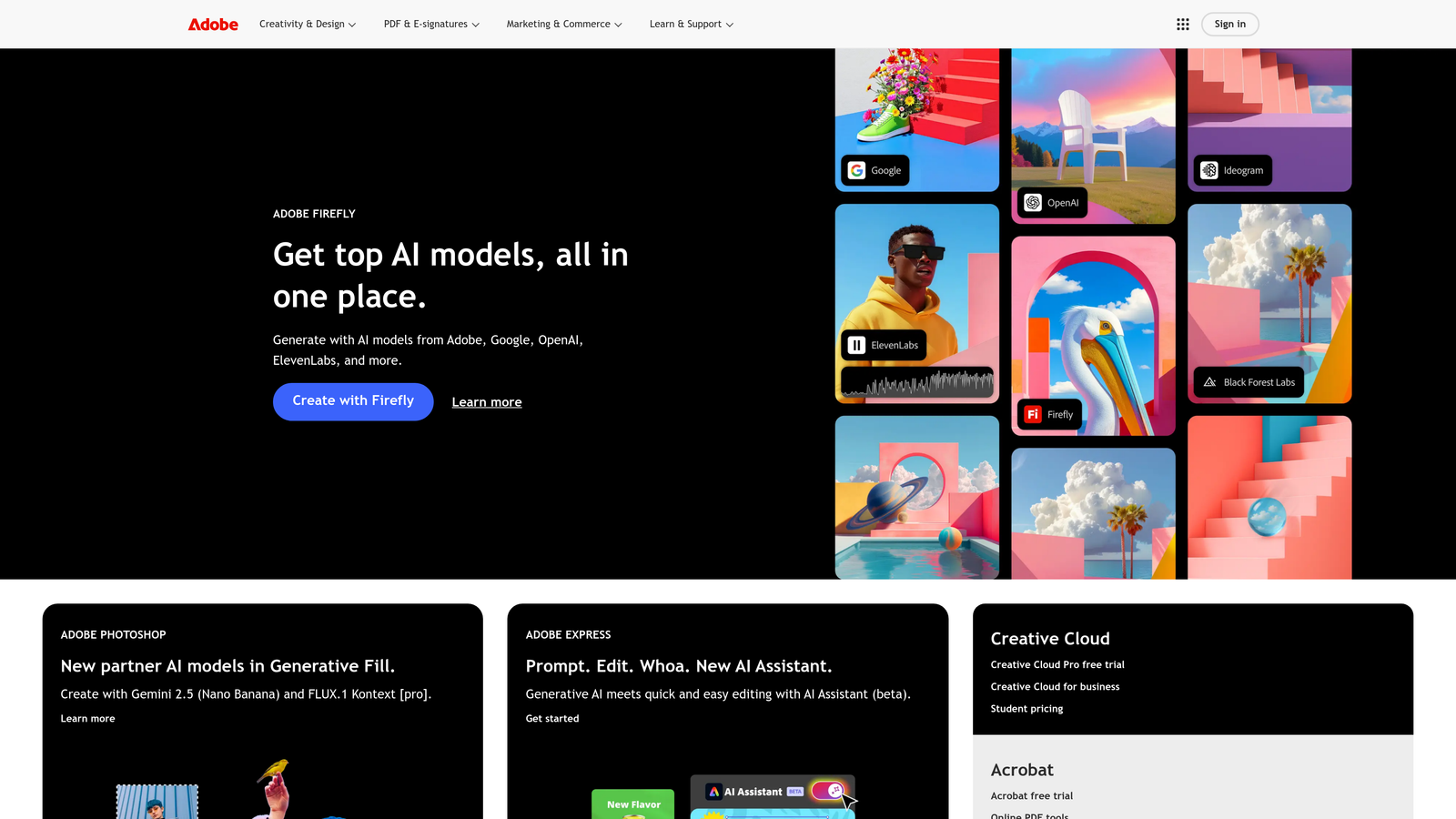
Overview & Background: Adobe Analytics allows organizations to collect and analyze data from various sources, providing a comprehensive view of customer interactions. Its robust attribution capabilities help businesses understand which channels drive the most value.
Key Features:
1. Advanced Attribution Models: Adobe offers complex modeling options, including algorithmic attribution, to evaluate channel performance effectively.
2. Segmentation Tools: Users can segment their audience based on behavior, demographics, and other criteria to tailor marketing strategies.
3. Integration with Adobe Experience Cloud: This integration allows for seamless data sharing across Adobe’s suite of marketing tools.
4. Real-Time Data Processing: Adobe Analytics processes data in real-time, providing marketers with up-to-date insights.
How It Works: Adobe Analytics requires a more complex setup compared to other tools, but it offers extensive customization and integration options, making it ideal for larger organizations.
Pricing & Plans: Adobe Analytics pricing is customized based on the organization’s needs and the scale of its operations.
Why It's Great for Marketers: Adobe Analytics is perfect for enterprises looking for in-depth insights and advanced analytics capabilities to inform high-level marketing strategies.
Best for: Marketing attribution across various channels with a focus on clarity.
Attribution is a marketing intelligence platform that focuses on providing clarity and actionable insights for marketers.

Overview & Background: This platform helps marketers understand the impact of their marketing efforts by providing visibility into how each channel contributes to conversions. It is designed for businesses that want straightforward attribution without the complexity of more elaborate tools.
Key Features:
1. Multi-Touch Attribution Reporting: Attribution allows users to analyze the effectiveness of multiple channels and touchpoints in driving conversions.
2. User-Friendly Interface: The platform is designed with simplicity in mind, making it easy for marketers to access insights without extensive training.
3. Integration Capabilities: Attribution integrates with various marketing tools and platforms, streamlining data collection and analysis.
4. Dynamic Dashboards: Users can customize their dashboards to focus on key metrics that matter most to their business.
How It Works: After integration, Attribution collects data across channels and provides reports that highlight performance and areas for improvement.
Pricing & Plans: Pricing for Attribution varies based on the features and scale of the business, making it adaptable for different needs.
Why It's Great for Marketers: Attribution’s focus on clarity and user experience makes it an excellent choice for marketers seeking straightforward insights into their campaigns.
Best for: Tracking customer behavior and conversion funnels.
Kissmetrics offers powerful analytics solutions focused on tracking customer behavior throughout the buying journey.
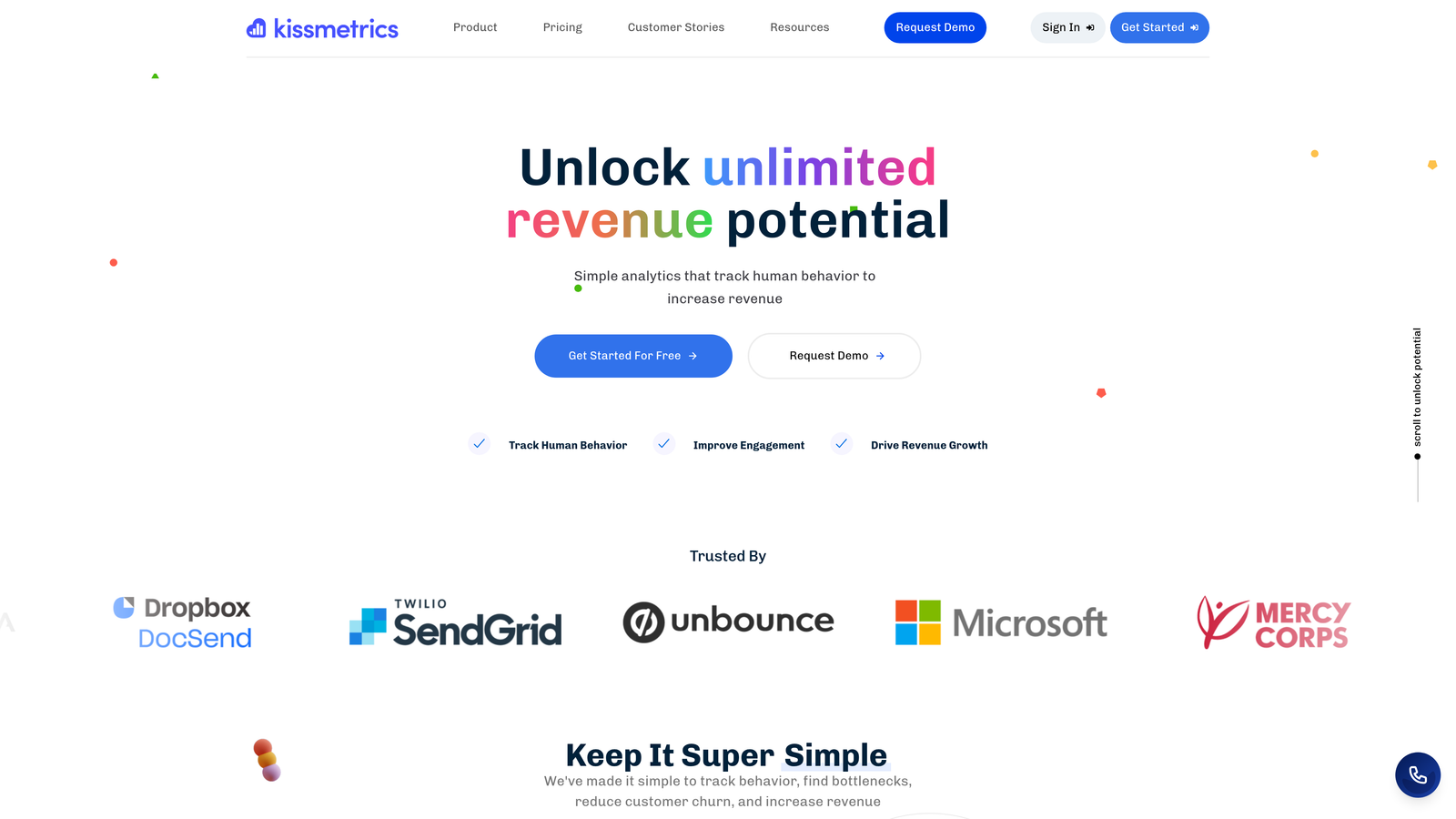
Overview & Background: Kissmetrics is designed to help marketers understand how their customers interact with their products and marketing campaigns. It provides detailed insights into conversion funnels and customer journeys.
Key Features:
1. Customer Journey Tracking: Kissmetrics allows businesses to see how users interact with products over time, leading to better understanding and optimization of conversion paths.
2. Funnel Analysis: Marketers can analyze conversion funnels to identify where users drop off and optimize those stages.
3. Cohort Analysis: Kissmetrics supports cohort analysis, allowing businesses to track user behavior over time and assess the impact of marketing changes.
4. Customization Options: Users can tailor reports to gain insights specific to their business needs, making the tool flexible for various marketing strategies.
How It Works: After integrating Kissmetrics with your website, it starts tracking user interactions automatically, providing insights through its analytics dashboard.
Pricing & Plans: Kissmetrics offers various pricing tiers depending on the features needed and the size of the business.
Why It's Great for Marketers: Kissmetrics is particularly beneficial for businesses looking to deepen their understanding of customer behavior and optimize their marketing strategies accordingly.
Best for: Data collection and integration for marketing analytics.
Segment is a customer data platform that helps businesses collect and manage their customer data for better analytics and attribution.
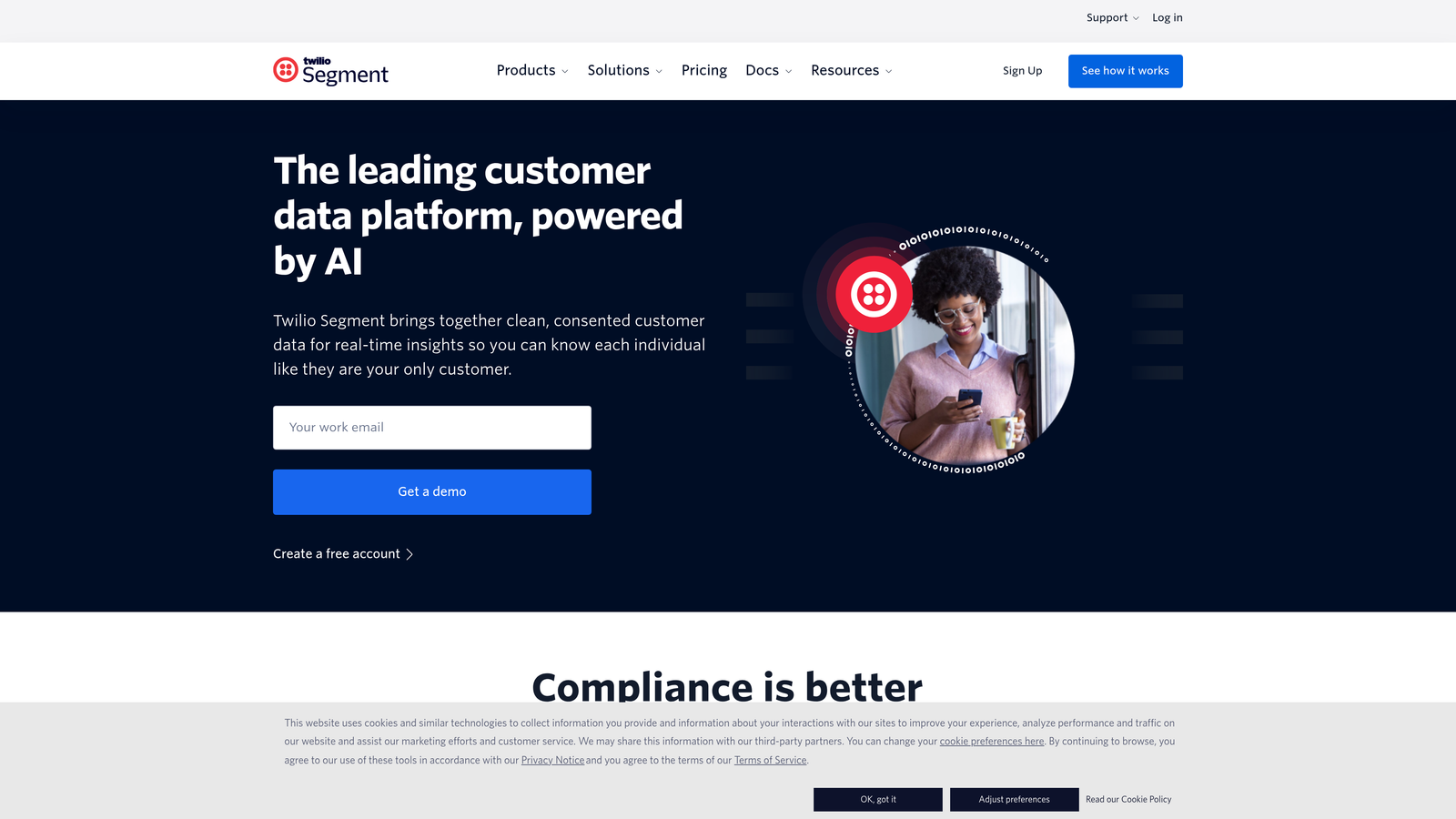
Overview & Background: Segment simplifies the process of collecting data from various sources, enabling marketers to unify their customer data for more effective analysis and attribution.
Key Features:
1. Data Unification: Segment collects data from multiple sources and presents it in a single view, making it easier to analyze customer interactions.
2. Integrations with Popular Tools: Segment integrates with numerous marketing tools, enhancing its data collection capabilities.
3. Real-Time Data Processing: Users can access real-time data to make timely decisions based on the latest insights.
4. Custom Audiences: Marketers can create custom audiences based on their data, allowing for targeted marketing efforts.
How It Works: After setting up Segment, it begins collecting data from various platforms and consolidating it for analysis, providing users with a comprehensive view of customer interactions.
Pricing & Plans: Segment offers a free trial, with pricing plans that scale based on the volume of data processed.
Why It's Great for Marketers: Segment’s ability to unify customer data from multiple sources makes it an invaluable tool for marketers looking to enhance their attribution strategies.
Best for: Visualizing marketing performance across channels.
Funnel.io is a data integration and visualization platform that provides insights into marketing performance.
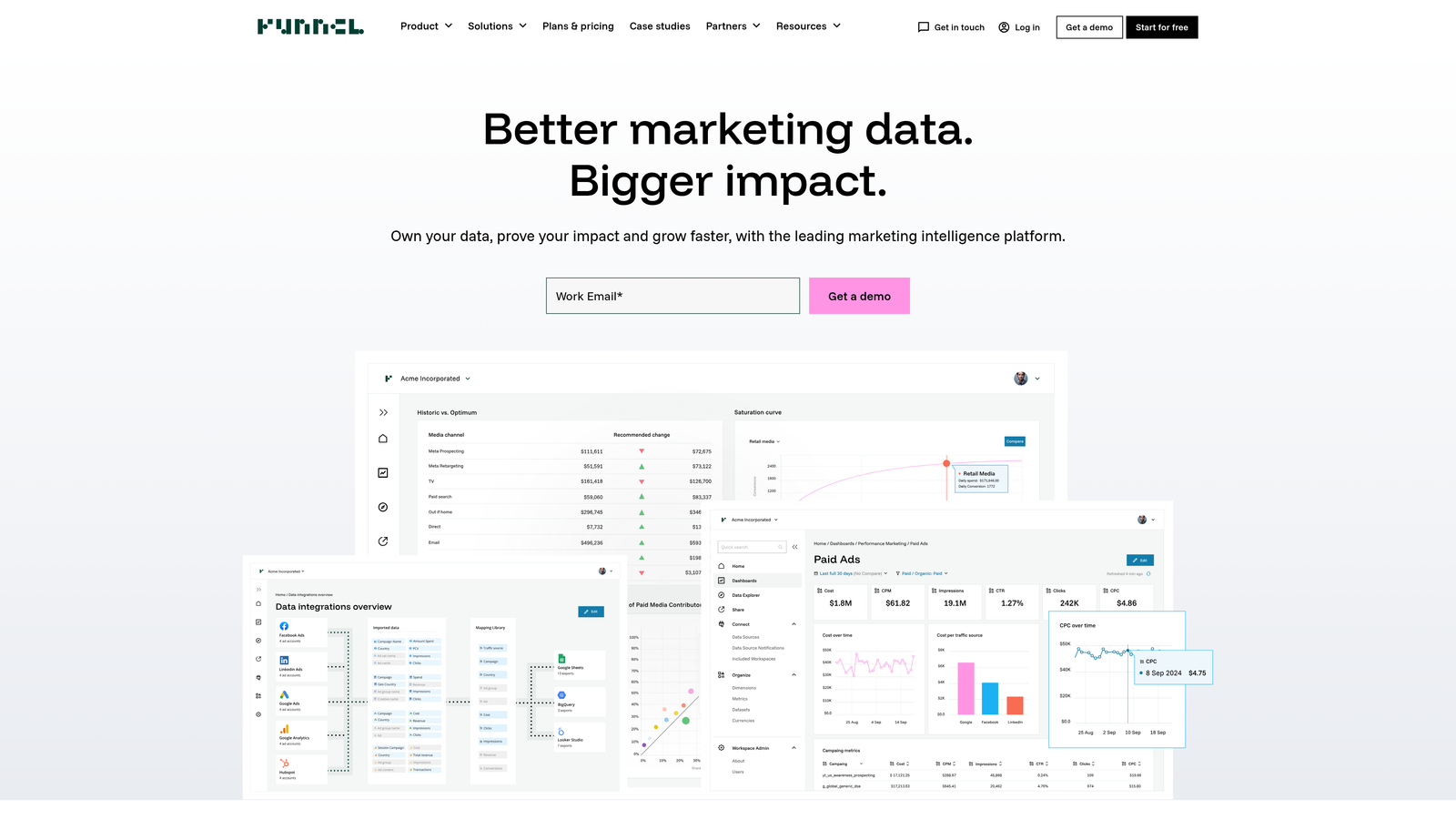
Overview & Background: Funnel.io helps marketers collect data from various marketing platforms and visualize it in a way that makes analysis straightforward and actionable.
Key Features:
1. Data Collection: Funnel.io automates the data collection process from various marketing channels, ensuring accurate and timely insights.
2. Custom Dashboards: Users can create personalized dashboards that focus on key performance indicators relevant to their marketing goals.
3. Integration with BI Tools: Funnel.io integrates with popular business intelligence tools, allowing for deeper analysis and reporting.
4. Flexible Reporting Options: Marketers can generate reports tailored to their specific needs, making it easier to communicate performance to stakeholders.
How It Works: After integrating Funnel.io with your marketing channels, the platform automatically collects data and presents it through intuitive dashboards and reports.
Pricing & Plans: Funnel.io provides a free trial, with paid plans based on the features and level of support required.
Why It's Great for Marketers: Funnel.io's focus on data visualization makes it an excellent choice for marketers who want clear insights into their channel performance and attribution.
Understanding and implementing effective channel marketing attribution techniques is essential for any marketer looking to optimize their campaigns. The tools mentioned above provide a range of functionalities that cater to different business needs, from comprehensive tracking to advanced analytics and reporting.
By leveraging these tools, you can gain valuable insights into your marketing performance, allocate your budget more effectively, and ultimately drive better results. Remember, the key to successful marketing attribution lies in choosing the right tool that aligns with your specific objectives and seamlessly integrates with your existing systems.
Ready to take your marketing attribution efforts to the next level? Get your free demo of Cometly today and start unlocking your marketing potential!
Learn how Cometly can help you pinpoint channels driving revenue.
.svg)
Network with the top performance marketers in the industry